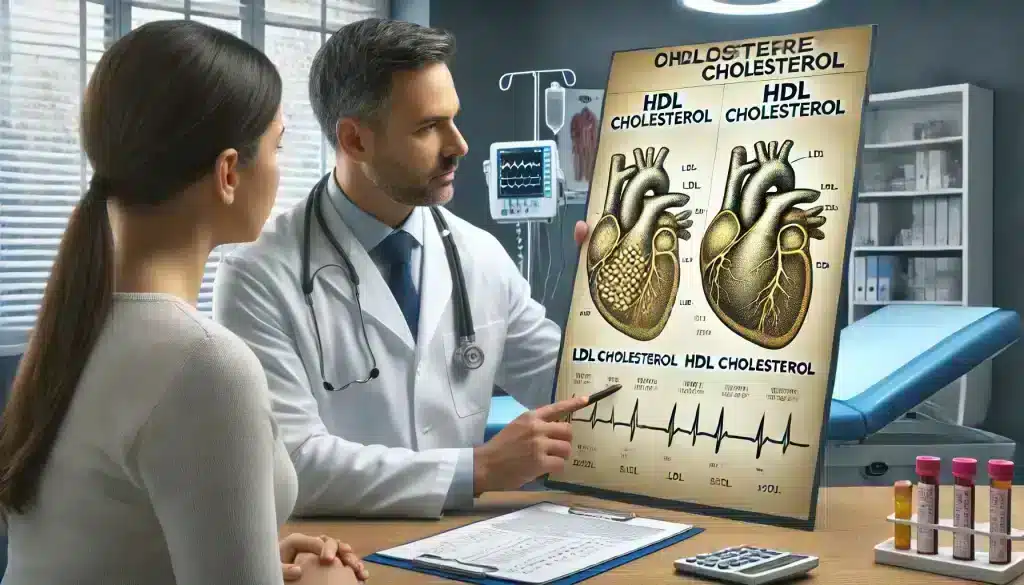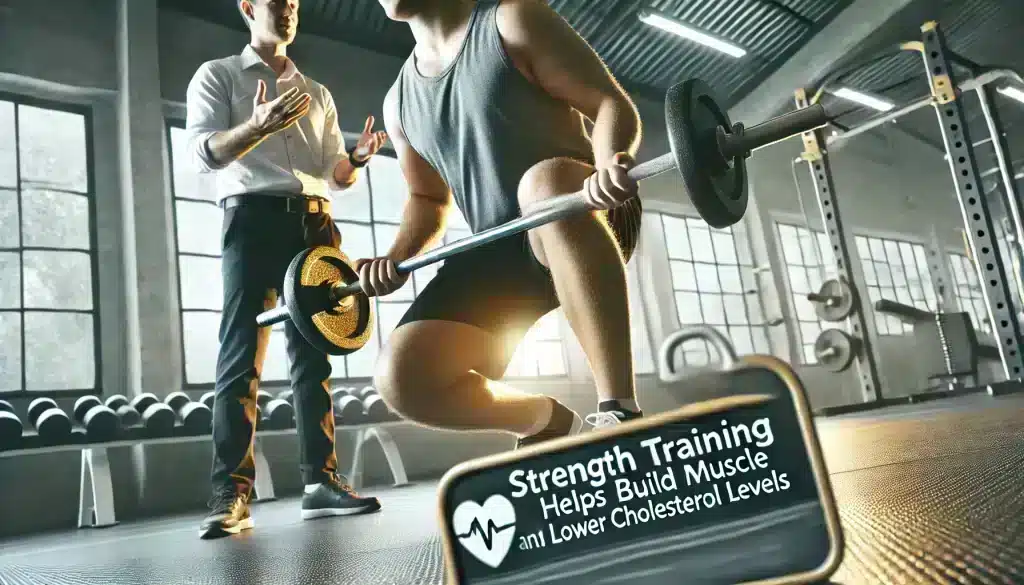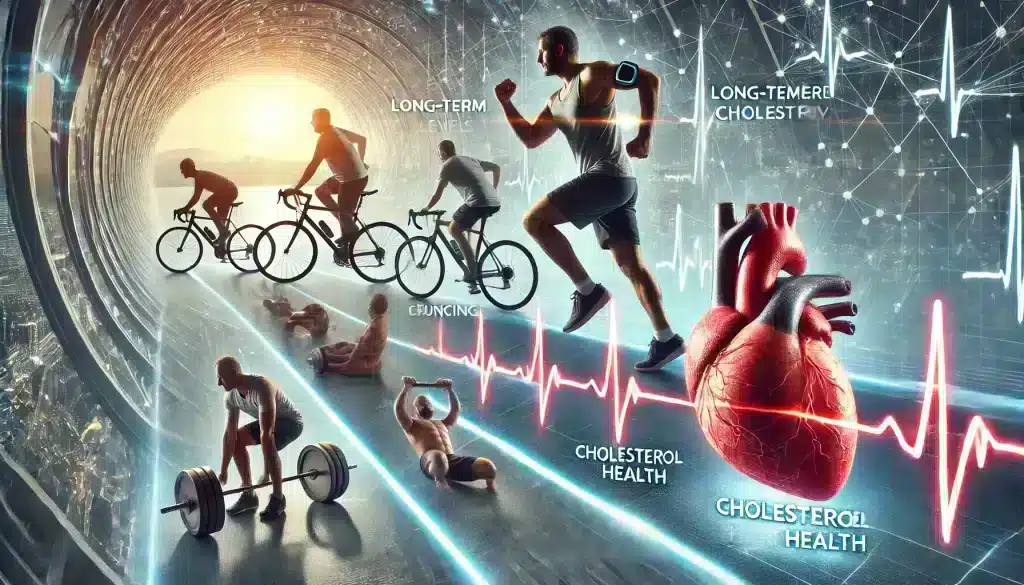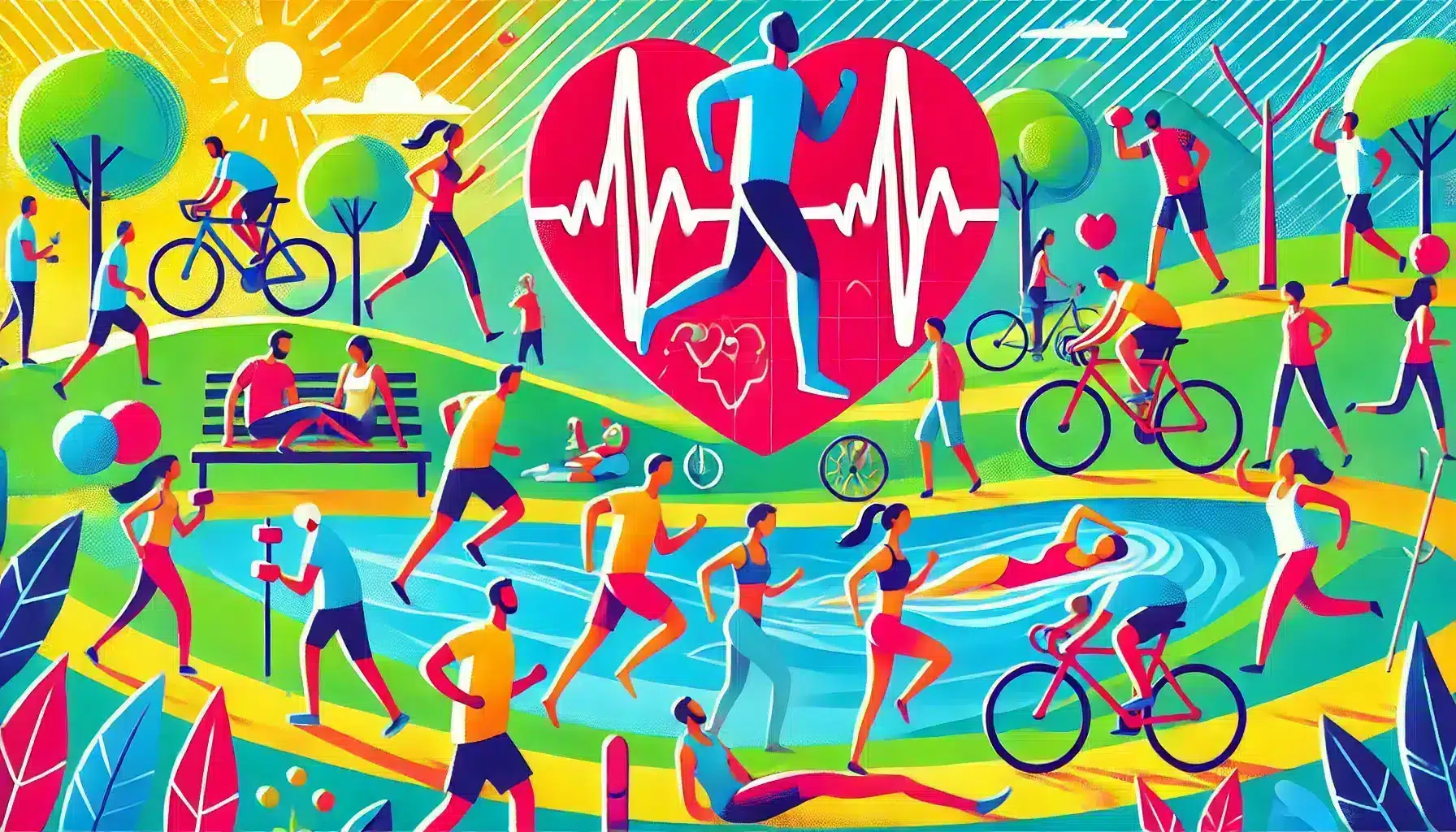Understanding Cholesterol and Its Role in the Body
To understand how exercise helps lower cholesterol levels, it’s important to first understand what cholesterol is and its role in the body. Cholesterol is a fatty substance produced by the liver and found in certain foods. It is essential for building cell membranes, producing hormones like estrogen and testosterone, and aiding in the production of vitamin D. While the body needs cholesterol to function, high levels of certain types of cholesterol can be harmful, particularly to heart health.

There are two main types of cholesterol: low-density lipoprotein (LDL) and high-density lipoprotein (HDL). LDL cholesterol, often referred to as “bad” cholesterol, can build up in the walls of the arteries, forming plaques that narrow the arteries and restrict blood flow. This buildup can increase the risk of heart disease and stroke. In contrast, HDL cholesterol, or “good” cholesterol, helps remove LDL cholesterol from the bloodstream, transporting it back to the liver where it can be processed and eliminated from the body. This balancing act between LDL and HDL is crucial for maintaining overall heart health.
- Cholesterol is necessary for hormone production and cell structure.
- LDL cholesterol contributes to plaque buildup in arteries, increasing the risk of heart disease.
- HDL cholesterol helps remove LDL cholesterol from the bloodstream, reducing heart disease risk.
When cholesterol levels become imbalanced, with too much LDL and too little HDL, the risk of developing cardiovascular issues rises. This is where lifestyle factors, particularly diet and exercise, come into play. By understanding the types of cholesterol and how they function, it becomes clearer why keeping these levels in check through exercise is crucial for long-term heart health.
How Does Exercise Impact Cholesterol Levels?
Regular exercise plays a vital role in maintaining balanced cholesterol levels. It not only helps lower “bad” LDL cholesterol but also boosts “good” HDL cholesterol. The relationship between exercise and cholesterol is well-documented in scientific research, showing that physical activity can significantly reduce the risk of developing heart disease by improving the ratio of HDL to LDL. But how exactly does exercise achieve this?
![]()
When you engage in physical activity, especially aerobic exercises like running, swimming, or cycling, your body begins to use up stored fat, including fat that might otherwise accumulate in the blood vessels. Over time, this helps lower the amount of LDL cholesterol in the bloodstream. Additionally, exercise promotes the liver’s ability to break down LDL cholesterol, which helps prevent plaque formation in the arteries.
- Exercise reduces the levels of LDL cholesterol by burning stored fat and preventing its accumulation in blood vessels.
- Physical activity enhances the liver’s function, aiding in the breakdown and elimination of excess cholesterol.
Beyond lowering LDL cholesterol, exercise also increases HDL cholesterol. HDL acts as a “clean-up crew,” carrying cholesterol away from the arteries and back to the liver, where it is either reused or expelled from the body. This process helps prevent the buildup of fatty plaques in the arteries, which is crucial for reducing the risk of heart disease and maintaining good heart health.
The impact of exercise on cholesterol levels is also linked to weight management. People who are overweight or obese tend to have higher LDL levels and lower HDL levels, which increases their risk of heart disease. By losing weight through regular physical activity, individuals can improve their cholesterol profile, increasing the proportion of HDL to LDL in the blood. This improvement is a key factor in how exercise helps reduce the risk of cardiovascular events like heart attacks and strokes.
Types of Exercise That Lower Cholesterol
Not all exercises affect cholesterol levels equally, but many types of physical activity have been shown to significantly improve heart health and reduce LDL cholesterol levels. The best exercises for lowering cholesterol are aerobic activities, which get the heart pumping and increase blood circulation. Strength training also plays a supportive role in improving overall fitness and reducing cardiovascular risk factors.

Aerobic Exercises: Walking, Running, Swimming, Cycling
Aerobic exercises are often referred to as “cardio” exercises because they directly engage the cardiovascular system. Regular aerobic activity can lower LDL cholesterol and raise HDL cholesterol, helping to maintain a healthy balance. Some effective forms of aerobic exercise include:
- Walking: Brisk walking is one of the easiest and most accessible forms of exercise. Studies show that walking for at least 30 minutes a day can help lower cholesterol levels and improve overall heart health.
- Running: Running is more intense than walking and can burn more calories in a shorter amount of time, leading to a greater reduction in LDL cholesterol.
- Swimming: Swimming is a full-body workout that not only lowers cholesterol but also improves lung capacity and muscle tone. It’s an excellent option for people who may have joint pain or arthritis, as it is low impact.
- Cycling: Biking, whether on a stationary bike or outdoors, is a great way to improve cholesterol levels. Cycling for at least 20-30 minutes a day has been linked to better heart health and improved cholesterol profiles.
Aerobic exercises increase the heart rate, promoting better blood flow and oxygenation throughout the body. Over time, these activities reduce LDL cholesterol, improve arterial flexibility, and enhance the body’s ability to process fats, which in turn lowers the risk of plaque buildup in the arteries.
Strength Training and Its Role in Cholesterol Reduction
While aerobic exercises are highly effective in reducing LDL cholesterol, strength training also plays an important role in cholesterol management. Lifting weights or doing bodyweight exercises like squats, lunges, and push-ups helps build muscle mass and reduce fat tissue, leading to improved cholesterol levels. Increased muscle mass contributes to a higher resting metabolic rate, meaning the body burns more calories throughout the day, even at rest.

- Strength training helps burn fat and increases muscle mass, both of which contribute to better cholesterol levels.
- Building muscle increases the body’s metabolism, leading to more efficient fat processing and cholesterol reduction.
Incorporating both aerobic exercises and strength training into a regular fitness routine ensures that the body benefits from improved heart health, better cholesterol profiles, and a reduced risk of heart disease. A well-rounded approach to fitness targets different aspects of cardiovascular health, ensuring optimal cholesterol levels and overall wellness.
How Often Should You Exercise to Lower Cholesterol?
Consistency is key when it comes to using exercise to lower cholesterol levels. While any amount of physical activity is better than none, research shows that regular, sustained exercise has the greatest impact on reducing LDL cholesterol and increasing HDL cholesterol. But how often should you exercise to see these benefits?
![]()
Recommended Exercise Frequency and Intensity
The American Heart Association recommends that adults get at least 150 minutes of moderate-intensity aerobic exercise or 75 minutes of vigorous-intensity aerobic exercise per week to support heart health and improve cholesterol levels. This translates to about 30 minutes of moderate exercise five times a week, or more intense workouts spread out over fewer days. Some examples of moderate-intensity activities include brisk walking, swimming, and cycling at a steady pace, while running or intense cycling are considered vigorous.
- Moderate-intensity exercise: Brisk walking, swimming, or cycling for at least 150 minutes per week.
- Vigorous-intensity exercise: Running or intense cycling for 75 minutes per week can provide similar benefits.
For those who prefer to break their exercise routine into shorter, more frequent sessions, even 10-minute intervals of physical activity throughout the day can help lower cholesterol levels. The key is maintaining regular activity and increasing the heart rate, which promotes better circulation and fat metabolism. Strength training should also be incorporated at least twice a week to further support muscle building and fat reduction, both of which contribute to improved cholesterol management.
Balancing Exercise with Diet for Optimal Cholesterol Control
While exercise plays a critical role in lowering cholesterol, it’s most effective when combined with a heart-healthy diet. Consuming foods rich in fiber, such as fruits, vegetables, and whole grains, can help lower LDL cholesterol levels. Additionally, eating foods high in healthy fats, such as avocados, nuts, and olive oil, can raise HDL cholesterol, complementing the effects of regular physical activity.
- Eating a diet rich in fiber helps lower LDL cholesterol levels.
- Healthy fats found in foods like avocados and nuts help raise HDL cholesterol.
For the best results, it’s important to create a holistic approach to cholesterol management that includes both regular exercise and dietary changes. Together, these lifestyle adjustments can significantly reduce the risk of heart disease and improve overall heart health. With consistent effort, the combination of physical activity and a heart-healthy diet will help achieve and maintain healthy cholesterol levels.
The Long-Term Benefits of Exercise for Heart Health
Regular exercise does more than just lower cholesterol levels; it has a profound impact on overall heart health and helps prevent long-term cardiovascular diseases. Engaging in physical activity consistently strengthens the heart, improves circulation, and reduces the risk of developing serious conditions like heart attacks and strokes. These long-term benefits underscore the importance of making exercise a part of your daily routine, particularly for those at risk of high cholesterol and heart disease.

Preventing Heart Disease with Regular Exercise
Heart disease remains one of the leading causes of death worldwide, but the risk of developing it can be significantly reduced through regular physical activity. Exercise helps maintain healthy arteries by reducing the amount of LDL cholesterol that can build up and form plaques. This, in turn, helps keep the blood vessels flexible and open, ensuring that the heart receives a steady supply of oxygen-rich blood.
- Regular exercise reduces the risk of plaque formation in the arteries, which can lead to heart attacks and strokes.
- Physical activity improves blood circulation, helping maintain healthy blood pressure and oxygen levels in the heart.
Furthermore, exercise aids in weight management, another critical factor in preventing heart disease. People who maintain a healthy weight through a combination of diet and exercise are less likely to suffer from conditions like high blood pressure and diabetes, both of which are risk factors for cardiovascular disease. By incorporating regular physical activity into your routine, you are taking a proactive step toward reducing your heart disease risk and improving your long-term health outlook.
Enhancing HDL Cholesterol Through Consistent Physical Activity
In addition to lowering LDL cholesterol, exercise is one of the most effective ways to boost “good” HDL cholesterol. The higher your HDL levels, the better your body is at removing excess LDL from your bloodstream, preventing plaque buildup in the arteries. Studies have shown that people who engage in regular aerobic exercises, such as running, swimming, or cycling, tend to have higher HDL levels than those who lead a more sedentary lifestyle.
Even moderate levels of physical activity can lead to significant improvements in HDL cholesterol. By increasing your heart rate and engaging in sustained physical activity, your body becomes more efficient at processing fats and cholesterol. This process reduces the likelihood of arterial blockages and enhances overall cardiovascular health.
- Increased HDL cholesterol helps remove LDL from the bloodstream, protecting against plaque buildup.
- Moderate to intense aerobic exercise boosts HDL levels, providing long-term cardiovascular benefits.
The long-term effects of exercise on cholesterol management and heart health cannot be overstated. Regular exercise promotes a healthier lipid profile, enhances cardiovascular efficiency, and reduces the risk of heart-related conditions. For anyone looking to protect their heart and reduce cholesterol levels, exercise is a cornerstone of effective prevention and care.
Combining Exercise with Other Cholesterol-Lowering Strategies
While exercise is one of the most effective ways to improve cholesterol levels and boost heart health, combining it with other lifestyle changes can lead to even more significant results. A multifaceted approach, including diet, medication when necessary, and other healthy habits, is often the best way to achieve and maintain healthy cholesterol levels. Let’s explore how different strategies work together to lower cholesterol and improve overall health.

The Role of Diet in Cholesterol Management
Alongside regular exercise, a heart-healthy diet plays a critical role in managing cholesterol. Foods that are high in fiber, such as oats, beans, and whole grains, help reduce LDL cholesterol by preventing it from being absorbed into the bloodstream. Additionally, increasing the intake of healthy fats, such as omega-3 fatty acids found in fish, flaxseeds, and walnuts, can help raise HDL cholesterol. Here are some dietary tips for maintaining a healthy cholesterol profile:
- Increase fiber intake: Foods high in soluble fiber, such as oatmeal, beans, and fruits like apples and pears, bind to cholesterol in the digestive system and help remove it from the body.
- Choose healthy fats: Replacing saturated fats found in red meat and processed foods with unsaturated fats from sources like avocados, olive oil, and nuts helps lower LDL cholesterol and improve overall cholesterol balance.
- Avoid trans fats: Found in many processed and fried foods, trans fats significantly raise LDL cholesterol and lower HDL cholesterol, contributing to heart disease risk.
By combining these dietary changes with regular exercise, you can improve your cholesterol profile more effectively and reduce the risk of heart disease. The combination of a healthy diet and physical activity creates a powerful defense against the buildup of cholesterol in the arteries.
Medications and Lifestyle Changes to Complement Exercise
In some cases, despite following a healthy diet and exercise routine, individuals may need additional help to control their cholesterol levels. Doctors may prescribe medications like statins to help lower LDL cholesterol more effectively. These medications work by blocking the enzyme in the liver responsible for producing cholesterol, helping to reduce the amount of cholesterol in the blood.
For people with high cholesterol, medications can be an essential part of a comprehensive treatment plan. However, they are most effective when combined with lifestyle changes, including a heart-healthy diet and regular physical activity. Medications alone cannot replace the benefits of exercise, which improves overall cardiovascular health and helps maintain a healthy weight.
- Medications like statins may be prescribed to lower LDL cholesterol, particularly for individuals with very high cholesterol levels or a history of heart disease.
- These medications are most effective when combined with lifestyle changes like a healthy diet and regular exercise.
By combining these approaches—exercise, diet, and medications when necessary—you can take a comprehensive approach to managing cholesterol and improving heart health. This strategy is particularly important for individuals with a genetic predisposition to high cholesterol or those who have already been diagnosed with heart disease. Working with your healthcare provider to find the right balance of treatments ensures that your cholesterol remains under control and your risk of heart disease is minimized.
FAQ
1. How does exercise help lower cholesterol levels?
Exercise helps lower cholesterol by reducing “bad” LDL cholesterol and increasing “good” HDL cholesterol. Physical activity promotes the body’s ability to process fats, removing LDL from the bloodstream and reducing plaque buildup in arteries.
2. What types of exercise are best for lowering cholesterol?
Aerobic exercises such as walking, running, swimming, and cycling are most effective for lowering cholesterol. Strength training also plays a role by building muscle mass, which helps burn fat and improve cholesterol levels.
3. How often should I exercise to see a reduction in cholesterol levels?
The American Heart Association recommends at least 150 minutes of moderate-intensity aerobic exercise or 75 minutes of vigorous-intensity exercise per week. This can be spread out over multiple sessions for better cholesterol management.
4. Can exercise alone lower my cholesterol, or do I need to change my diet as well?
While exercise is crucial for lowering cholesterol, combining it with a heart-healthy diet is even more effective. Foods high in fiber and healthy fats, along with regular exercise, can significantly reduce LDL cholesterol and increase HDL cholesterol.
5. How long does it take to see changes in cholesterol levels from exercise?
Many people begin to see improvements in their cholesterol levels after a few weeks of regular exercise. However, significant changes often occur after several months of consistent physical activity, combined with dietary changes.
6. Does strength training help lower cholesterol?
Yes, strength training can help lower cholesterol by reducing body fat and increasing muscle mass. It boosts the body’s metabolism, making it more efficient at processing fats, which contributes to better cholesterol control.
7. Can losing weight through exercise improve cholesterol levels?
Yes, losing weight through exercise can improve your cholesterol profile. Weight loss reduces LDL cholesterol and increases HDL cholesterol, helping to reduce the risk of heart disease.
8. What are the long-term benefits of exercise for cholesterol management?
Long-term exercise helps maintain healthy cholesterol levels, improves cardiovascular health, and reduces the risk of heart disease. Regular physical activity also enhances the body’s ability to keep cholesterol in balance over time.
9. Do I need medication to lower cholesterol, or is exercise enough?
In some cases, medication may be necessary to lower cholesterol, especially for individuals with very high cholesterol or a family history of heart disease. However, exercise combined with a healthy diet can be highly effective for most people in managing cholesterol.
10. Can I still benefit from exercise if I’m already on cholesterol-lowering medication?
Yes, even if you’re on medication, exercise provides additional benefits for heart health. It helps improve cholesterol levels further, boosts overall cardiovascular health, and supports weight management.



